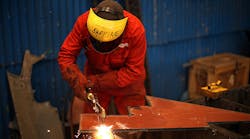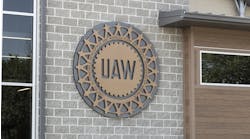The jobs market is stronger today than it was last month, or even last week – numerically speaking, at least – according to the latest figures released today by the Bureau of Labor Statistics.
The overall market added 255,000 new jobs in July, well ahead of forecasts of about 185,000. The three-month average is now up to 190,000, with the unemployment rate still at 4.9%. Manufacturing added 9,000 jobs in the month, and was the beneficiary of an upward revision for June from 14,000 to 15,000.
“The improvement still left the industry in its longest jobs slump since the Great Recession, as employment remained down on net since January 2015,” economist and researcher Alan Tonelson said. Tonelson also noted that while manufacturing wages increased again to its fourth straight yearly current-dollar increase of more than 3%, manufacturing's share of total U.S. employment fell to a record low 8.52%.
Other industry leaders eyed the presidential election — now 95 days away — while discussing the new numbers.
"Two months of very modest growth in manufacturing jobs is certainly better than negative territory, where we've been much of the past year,” said Scott Paul, president of the Alliance for American Manufacturing, “Now imagine the possibilities for factory jobs if we had better conditions, such as we would have with a robust infrastructure investment.
"Both Hillary Clinton and Donald Trump have been talking about these sorts of things on the campaign trail, which I'm happy to see. But it is just a start. The next president must make manufacturing job growth a priority."
Jay Timmons, president and CEO of the National Association of Manufacturers, largely echoed those sentiments, saying that, “while numbers continue to improve, the fact is that our economy remains nowhere near its full potential, To grow jobs in America, manufacturers need their products sold to more markets. Isolationist rhetoric will not help grow manufacturing jobs in the United States, but the right policies” — including market-opening free trade agreements like the Trans-Pacific Partnership — “will.
And while Paul expressed some satisfaction with the issues discussed by Clinton and Trump, Timmons was disappointed by their “continue(d) disservice by perpetuating myths about free trade. It’s time to stop undermining the ability of manufacturers in the United States to compete and win through trade and embrace policies like TPP that are going to put our nation back in the driver’s seat and ensure success for our economy.”
As a whole, the country seems to be getting closer and closer back to that proverbial driver’s seat. Now when will the economy start to follow the jobs numbers a little more closely?




